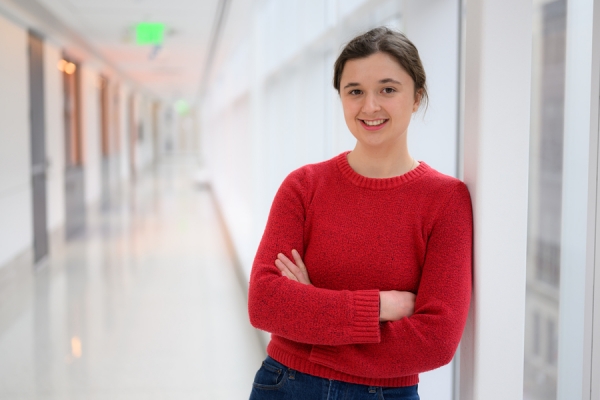PhD student Miranda Schwacke explores how computing inspired by the human brain can fuel energy-efficient artificial intelligence.
PhD student Miranda Schwacke explores how computing inspired by the human brain can fuel energy-efficient artificial intelligence.
How can you use science to build a better gingerbread house?
That was something Miranda Schwacke spent a lot of time thinking about. The MIT graduate student in the Department of Materials Science and Engineering (DMSE) is part of Kitchen Matters, a group of grad students who use food and kitchen tools to explain scientific concepts through short videos and outreach events. Past topics included why chocolate “seizes,” or becomes difficult to work with when melting (spoiler: water gets in), and how to make isomalt, the sugar glass that stunt performers jump through in action movies.
Two years ago, when the group was making a video on how to build a structurally sound gingerbread house, Schwacke scoured cookbooks for a variable that would produce the most dramatic difference in the cookies.
Read More: Massachusetts Institute of Technology (MIT)
Image: PhD student Miranda Schwacke develops materials and devices for neuromorphic computing, which processes and stores information simultaneously, like neurons and synapses do in the brain. (Credits:Photo: Gretchen Ertl)




